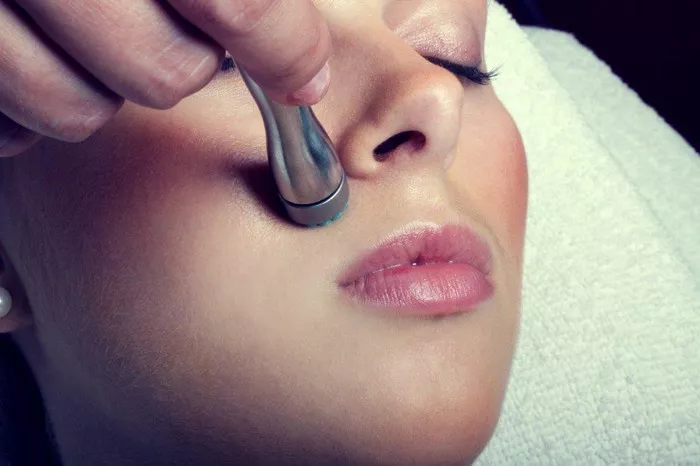Microdermabrasion is a popular cosmetic procedure known for its ability to rejuvenate the skin’s appearance by exfoliating the top layer and promoting a smoother, more youthful complexion. While it offers several benefits, including reducing fine lines, wrinkles, and uneven skin texture, it’s natural to have concerns about potential side effects, such as redness. In this article, we will explore the duration of redness following a microdermabrasion treatment, factors that influence its longevity, and tips on minimizing and managing post-treatment redness.
Understanding Microdermabrasion
Microdermabrasion is a non-invasive cosmetic procedure that utilizes a specialized device to gently remove the outermost layer of skin, the stratum corneum. This process involves the use of abrasive particles or a diamond-tipped wand to exfoliate the skin’s surface, stimulating collagen production and promoting skin renewal. Microdermabrasion is popular for its ability to address various skin concerns, such as fine lines, wrinkles, acne scars, sun damage, and uneven skin tone.
Key Aspects of Microdermabrasion
Exfoliation: Microdermabrasion exfoliates the skin, effectively removing dead skin cells and debris, resulting in smoother, fresher-looking skin.
Non-Invasive: Unlike surgical procedures, microdermabrasion is non-invasive, meaning it does not require incisions or downtime.
Quick Procedure: A typical microdermabrasion session takes approximately 30 minutes, making it a convenient option for those with busy schedules.
Mild Discomfort: The procedure is generally well-tolerated, with minimal discomfort reported by most patients. It is often described as feeling like a gentle scratching or mild vibration on the skin.
Minimal Side Effects: While redness and sensitivity are common post-treatment side effects, they are typically mild and short-lived.
Redness After Microdermabrasion
Redness is one of the most common side effects following microdermabrasion. It occurs because the skin’s surface has been exfoliated, revealing the fresh, new skin underneath. This newly exposed skin may appear pink or slightly red, similar to a mild sunburn. However, the extent and duration of redness can vary from person to person and are influenced by several factors:
Skin Sensitivity: Individuals with sensitive skin may experience more pronounced redness after microdermabrasion.
Skin Type: Different skin types react differently to microdermabrasion. People with fair or light skin tones may exhibit more noticeable redness than those with darker complexions.
Treatment Intensity: The intensity of the microdermabrasion treatment can influence the degree of redness. More aggressive treatments may result in longer-lasting redness.
Post-Treatment Care: Proper post-treatment care is crucial in minimizing redness and accelerating the skin’s recovery. Following recommended skincare guidelines can help reduce redness and irritation.
How Long Does Microdermabrasion Redness Last?
Typically, redness following microdermabrasion is transient and short-lived. Most individuals can expect the redness to subside within a few hours to a day after the procedure. However, some people may experience redness for up to two to three days, depending on the factors mentioned earlier.
To minimize the duration of redness and promote quicker healing, consider the following post-treatment tips:
Moisturize: Apply a gentle, hydrating moisturizer to keep the skin well-hydrated and help soothe any irritation.
Avoid Sun Exposure: Shield your skin from direct sunlight for a few days post-treatment. If you must go outside, apply a broad-spectrum sunscreen with at least SPF 30.
Gentle Skincare: Avoid using harsh or abrasive skincare products for a few days after microdermabrasion. Opt for mild, non-irritating products.
Avoid Heat: Steer clear of hot showers, saunas, and hot tubs immediately after treatment, as heat can exacerbate redness.
Stay Hydrated: Drinking plenty of water helps keep the skin hydrated from the inside out, which can aid in the healing process.
Follow Provider’s Recommendations: Adhere to any specific post-treatment instructions provided by your skincare professional to ensure optimal results and minimize redness.
When to Be Concerned
In most cases, post-microdermabrasion redness is a normal and expected side effect. However, if redness persists for more than a few days, is accompanied by severe irritation or discomfort, or appears to be worsening, it is advisable to contact your skincare provider. Such prolonged or severe redness may indicate an adverse reaction or other underlying issues that require attention.
Conclusion
Redness following microdermabrasion is a common and usually temporary side effect. While the duration of redness varies among individuals, it typically subsides within a few hours to a day. By following proper post-treatment care and skincare guidelines, you can help minimize redness and accelerate the skin’s healing process. If you have concerns about post-microdermabrasion redness or experience any unusual or persistent symptoms, consult your skincare professional for guidance and reassurance. Ultimately, microdermabrasion remains a safe and effective method for achieving smoother, more radiant skin with minimal side effects.


